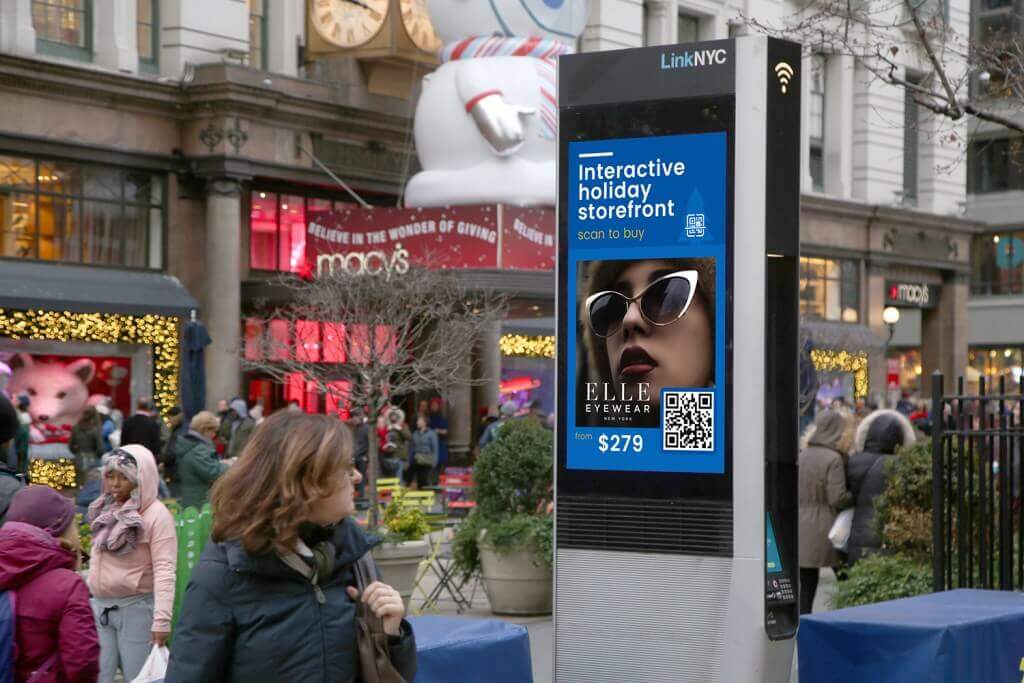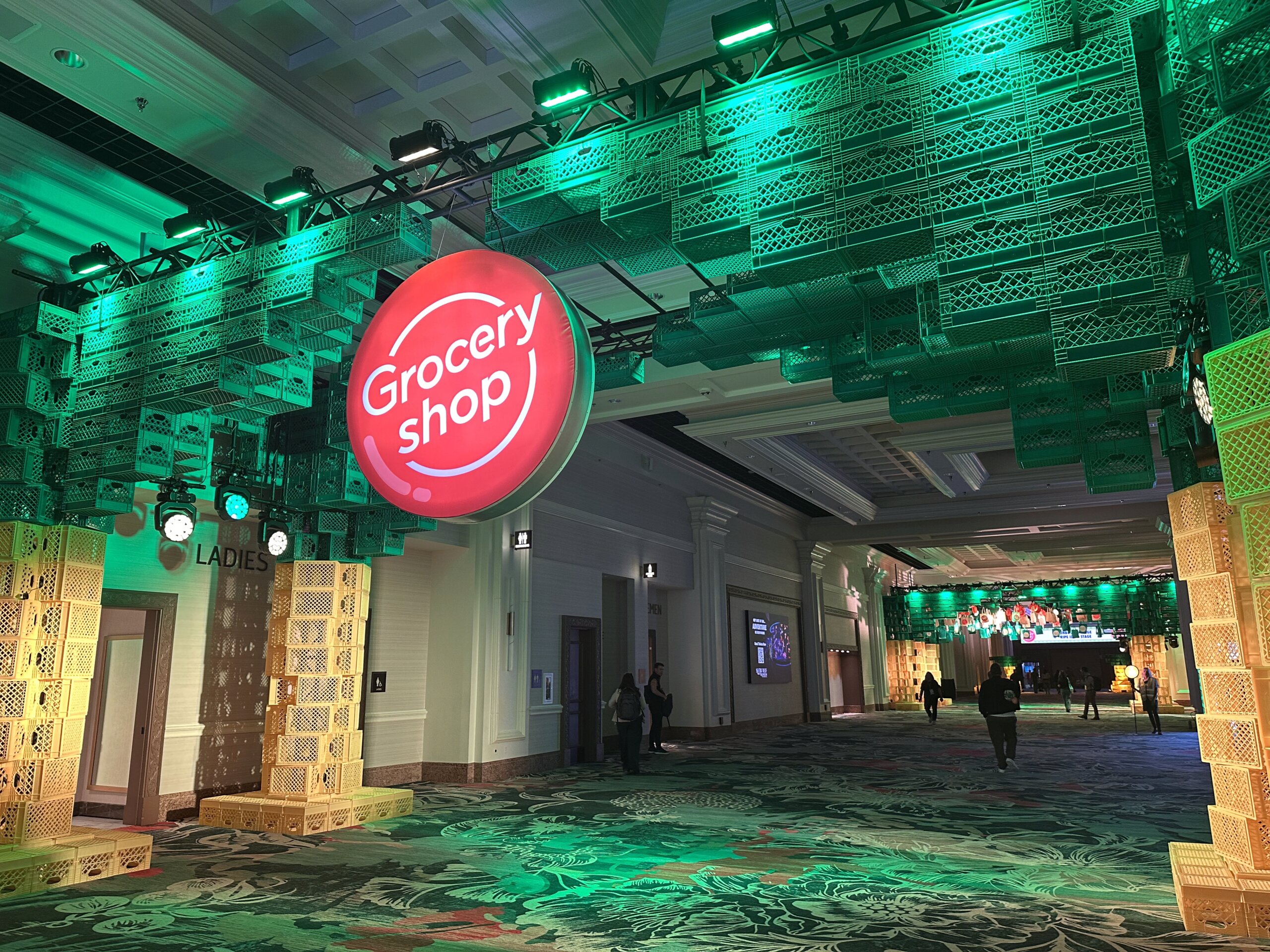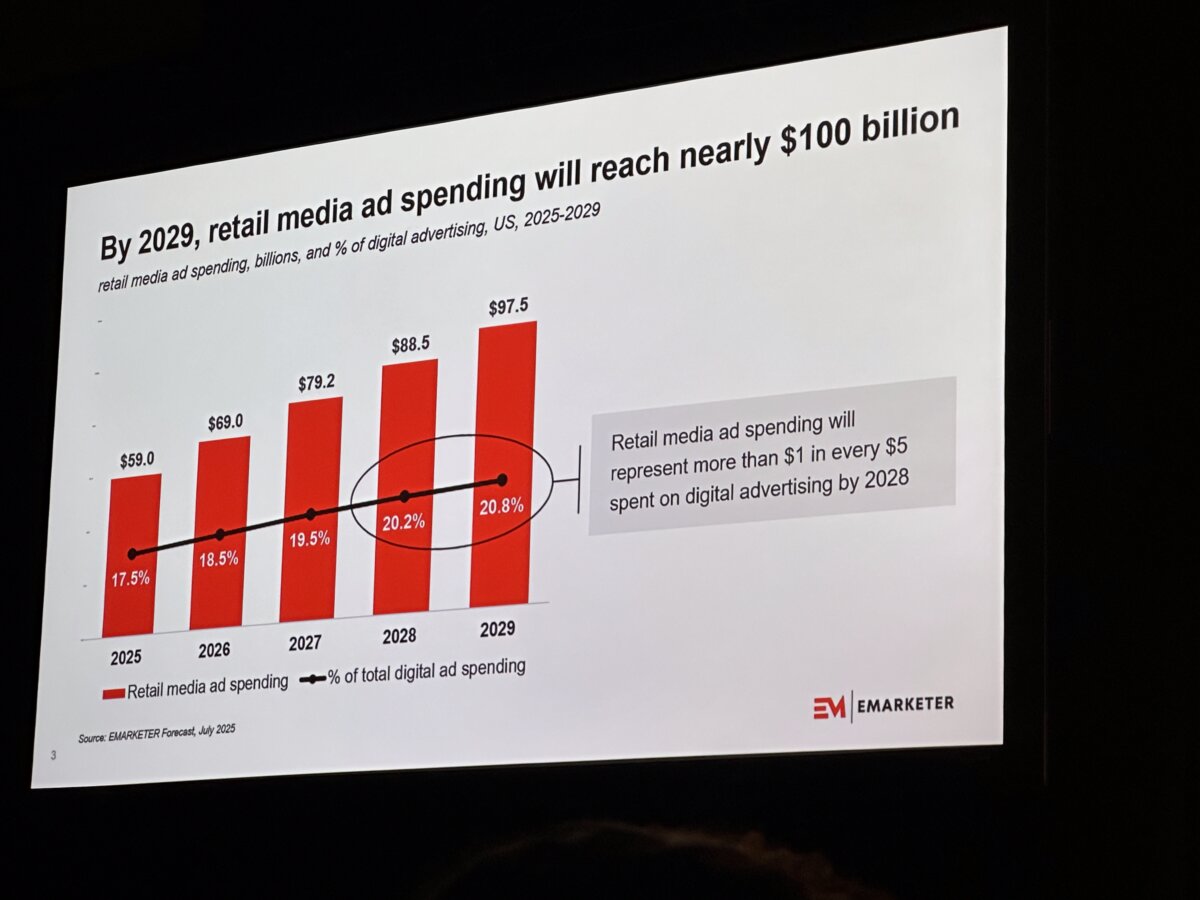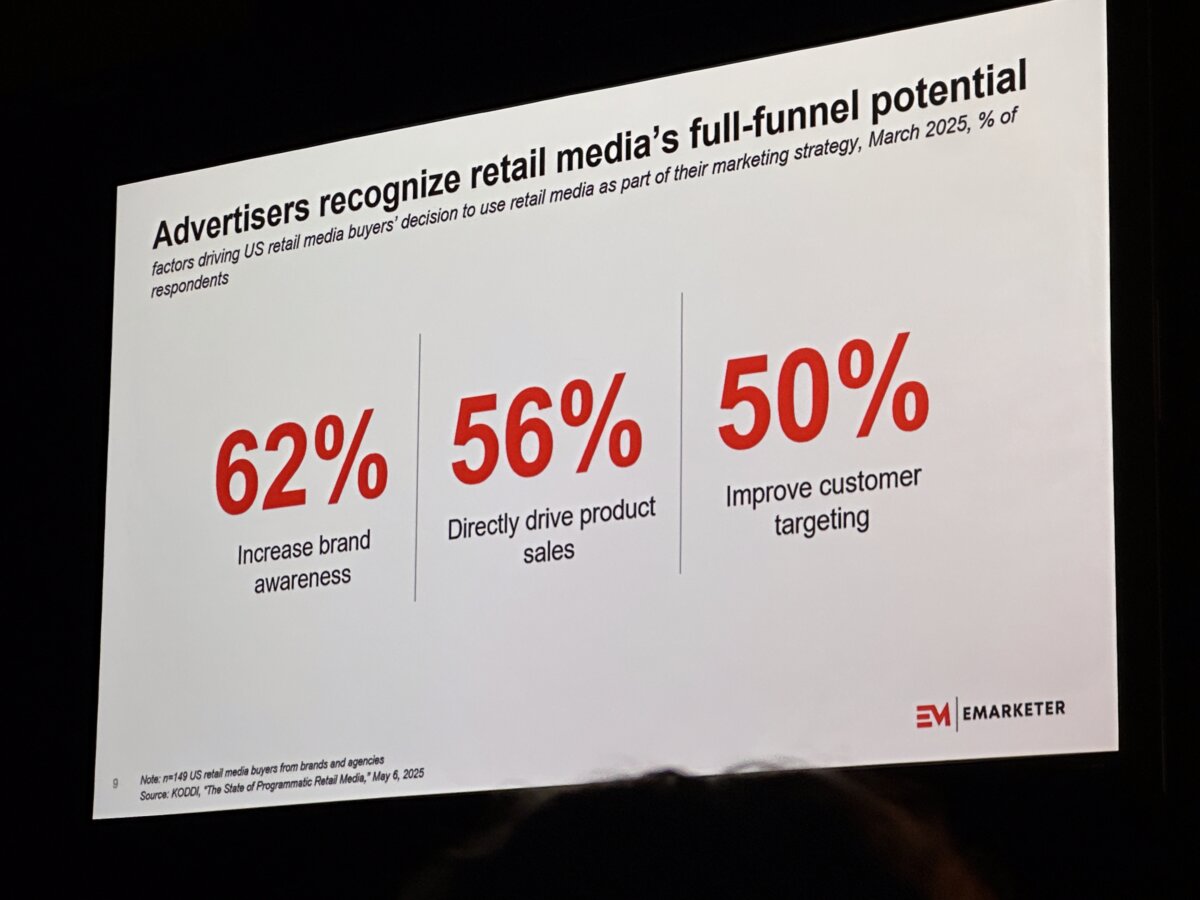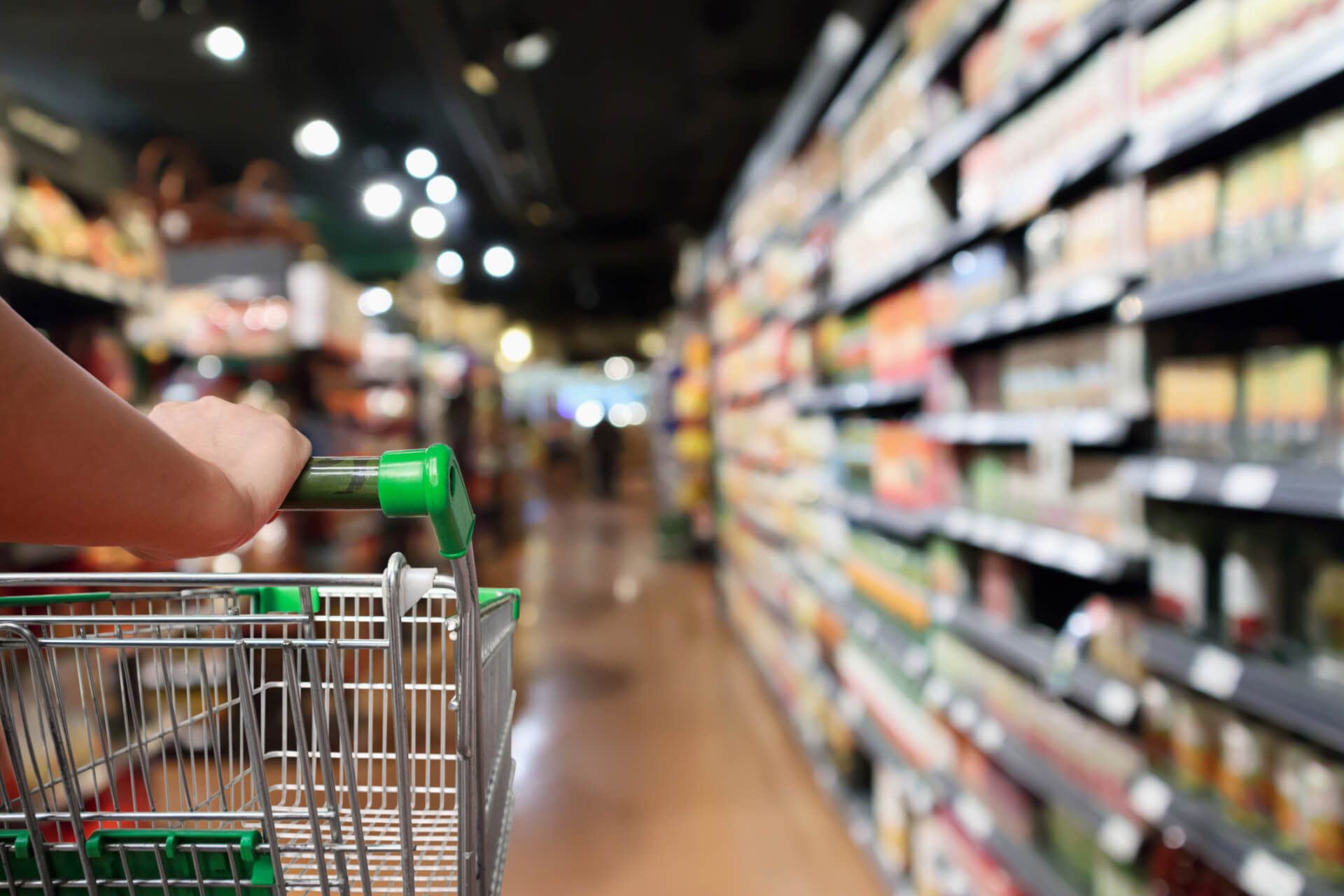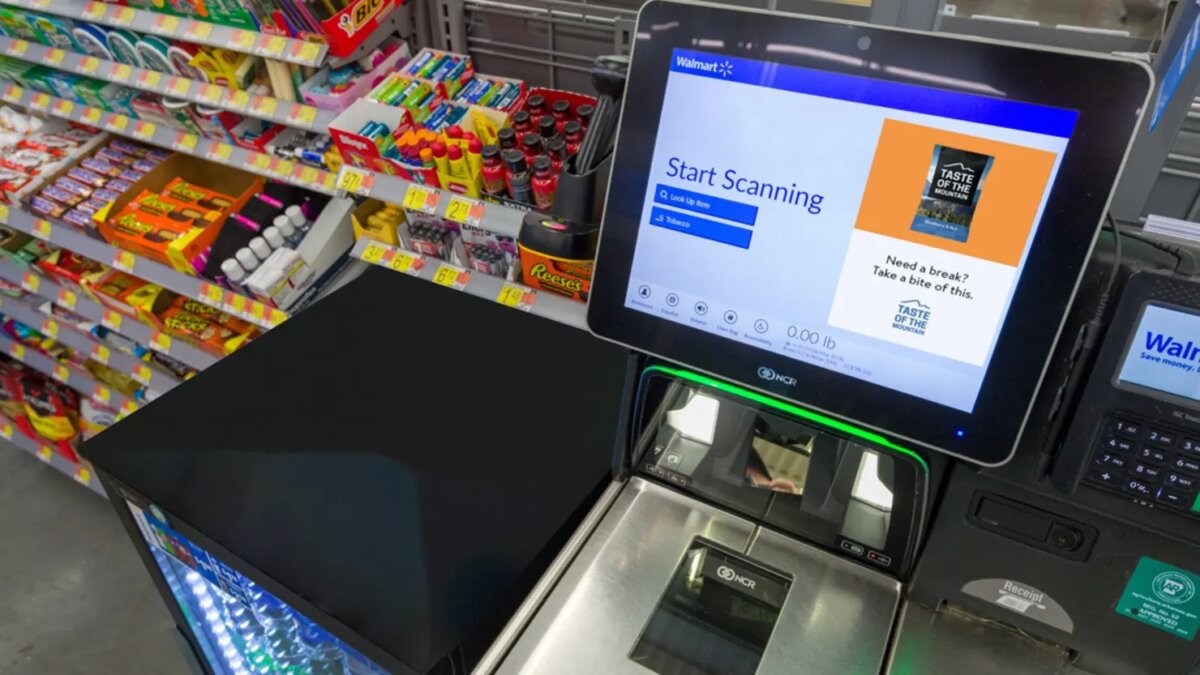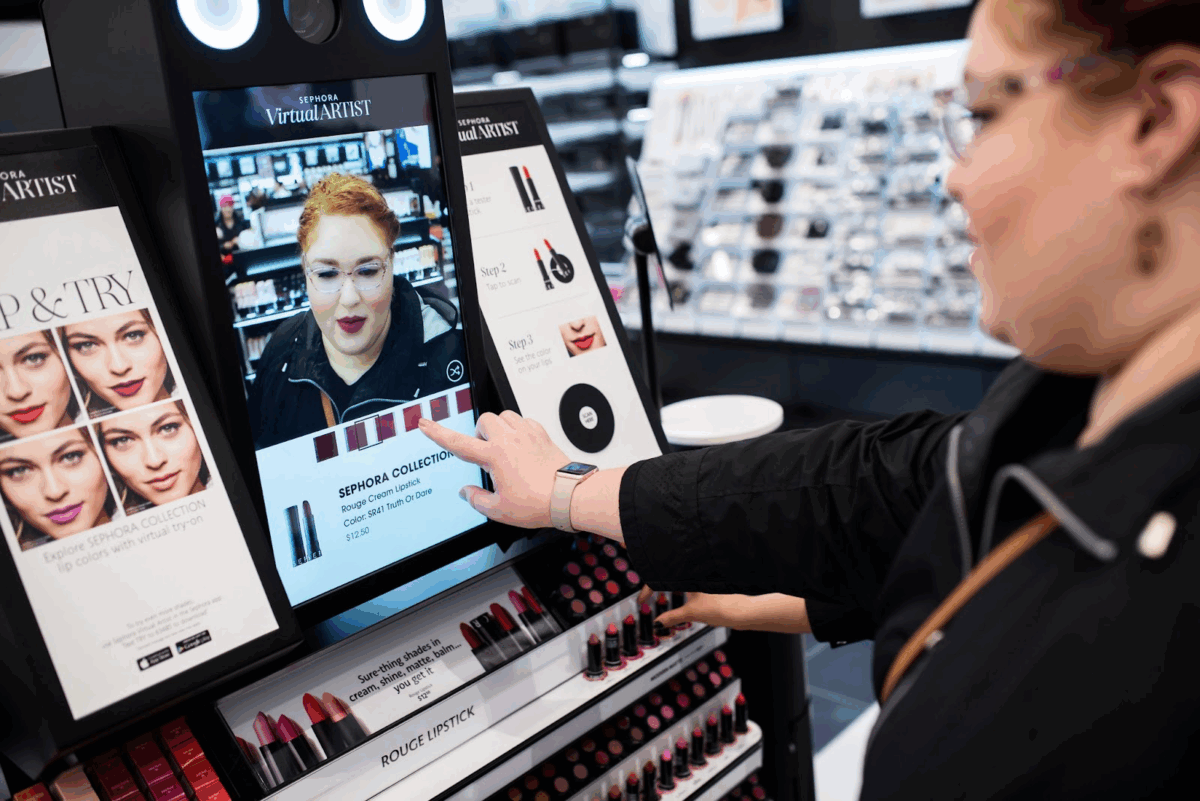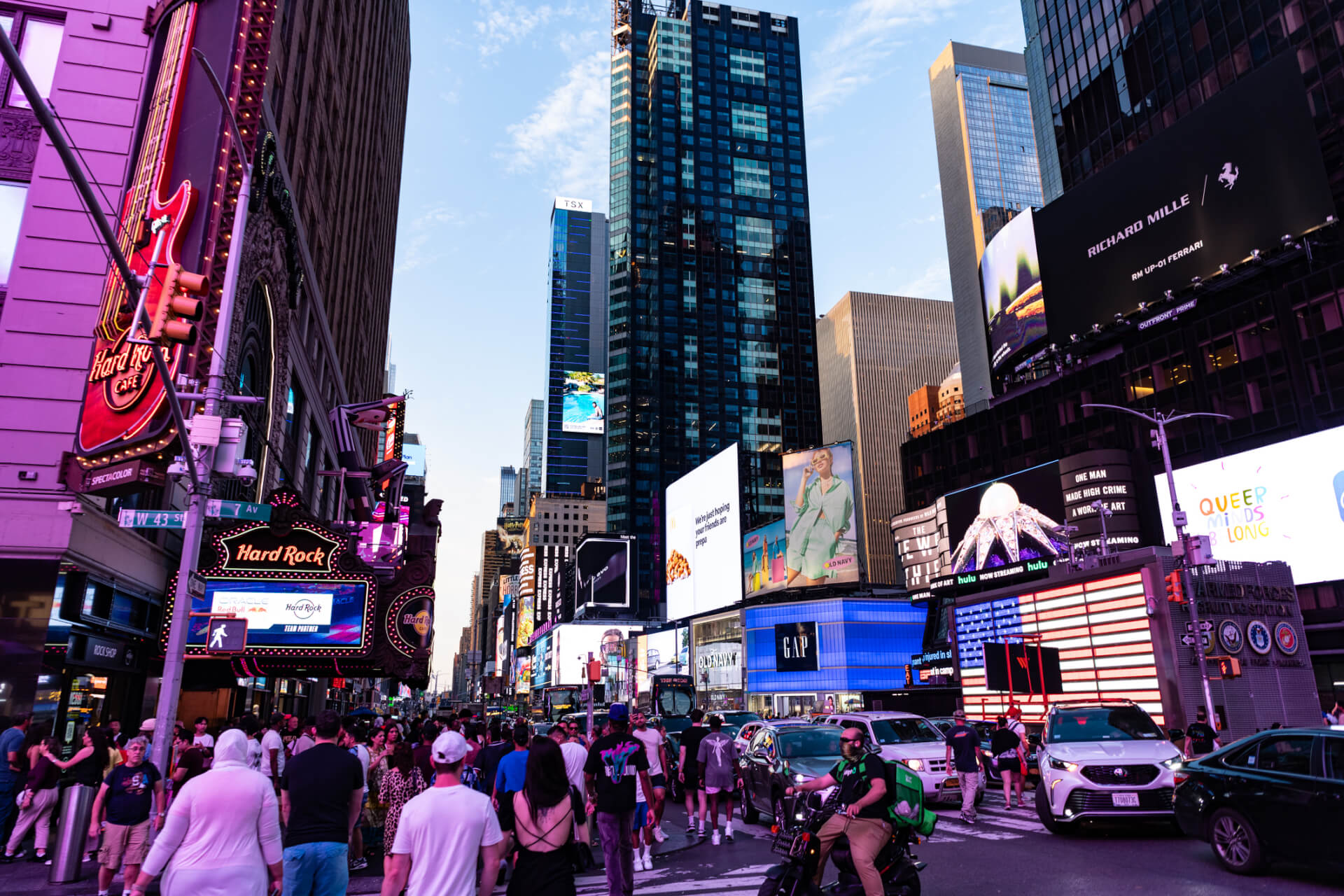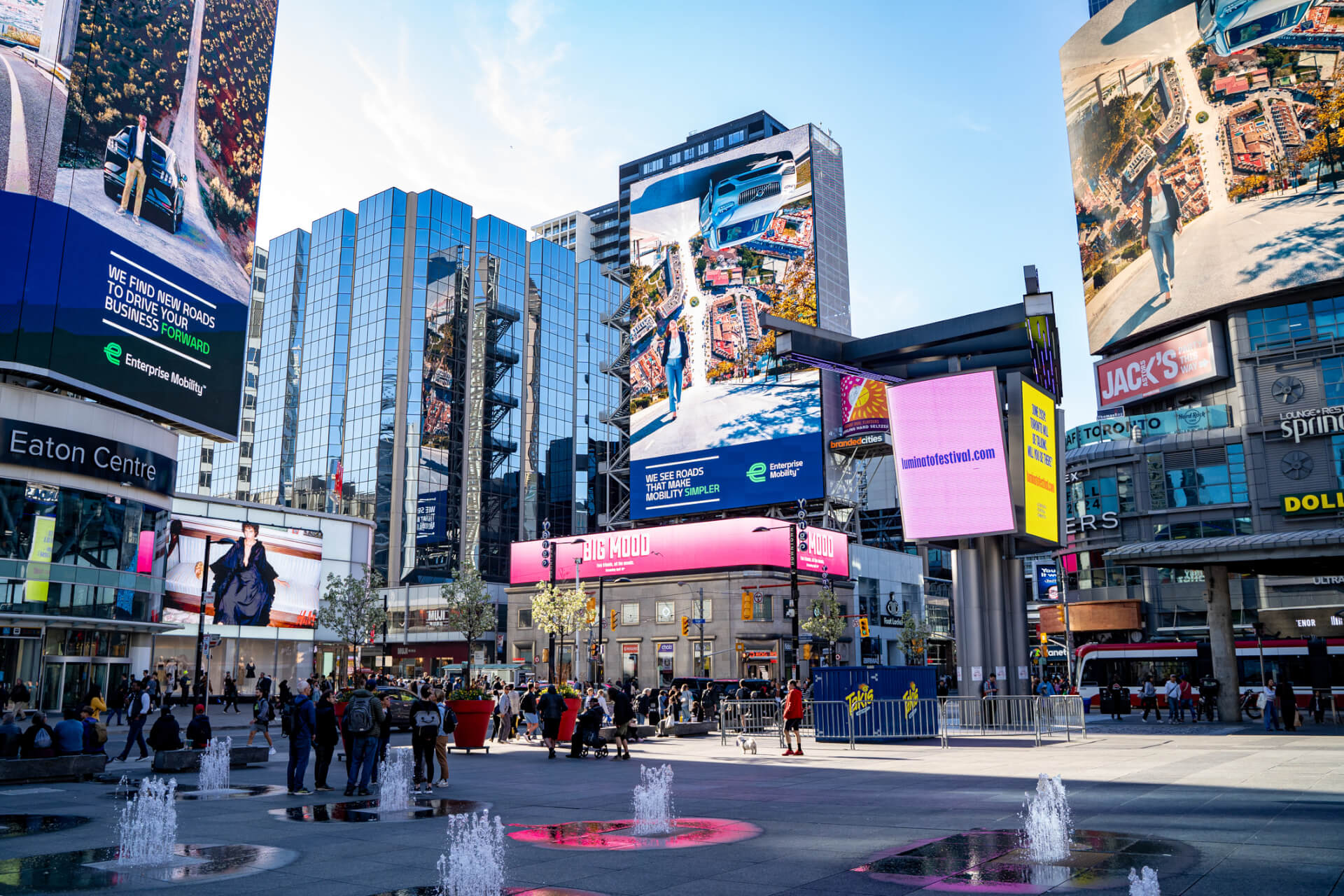| October 11, 2021
Boost consumer engagement and measure OOH ad exposure with dynamic QR codes
QR codes have made a big comeback in recent years, driven by the widespread use of smartphones and the post-pandemic demand for contactless solutions. In fact, over 94 million U.S. consumers will use smartphone QR scanners this year alone — a number that’s expected to reach 102.6 million by 2026, according to eMarketer.
Once seen as a novelty, QR codes have grown into a valuable tool for out-of-home (OOH) marketing. With quick access to digital content through billboards, posters, and digital out-of-home (DOOH) ads, these codes add an interactive element to campaigns and give brands an easy way to boost engagement across channels. Paired with new tools for measuring and tracking OOH impact, QR codes on (D)OOH ads make it simpler to assess campaign performance and gather actionable insights.
In this article, we explore how QR codes are transforming OOH campaigns — creating seamless offline-to-online experiences and helping brands capture valuable data on audience interactions and campaign impact.
Jump to:
- What are QR codes and why are they relevant in OOH advertising?
- How QR codes work to extend and improve measurement of (D)OOH campaigns
- Key benefits of using QR codes in OOH advertising
- Examples of successful QR code campaigns on OOH advertising
What makes QR codes perfect for (D)OOH advertising?
QR codes (Quick Response codes) are two-dimensional barcodes that, when scanned with a smartphone, direct users to specific digital content like a website, video, or app.
As consumers have grown accustomed to QR codes, brands are using them more in campaigns to provide personalized offerings like product info, special promotions, and coupons. With just a quick scan, anyone with a smartphone camera and internet camera can take action, seamlessly engaging with the brand and/or its ad content across multiple channels.
This simple yet effective technology has become especially popular in OOH advertising, letting brands connect directly with people in physical locations — like bus stops, parking lots, or store entrances. In short, their easy integration with mobile devices and contactless tech has made them an ideal bridge between the physical and digital worlds.
Dynamic vs. static QR codes: Which to pick for billboard and DOOH advertising
It’s worth noting that there are two main types of QR codes used in advertising: static and dynamic. Static QR codes are fixed, meaning once they’re created, their content can’t be changed. They’re great for one-time use or unchanging messages, like directing audiences to a permanent webpage or providing a contact number. However, they can be less versatile for campaigns that need to evolve over time.
Dynamic QR codes, on the other hand, are built for flexibility. With these codes, you can update the content anytime — no need to reprint or replace the code. This adaptability makes it easy to keep messaging fresh, adjust campaigns on the fly, and track valuable data on where, when, and how often people engage. Essentially, dynamic QR codes provide the insights you need to optimize OOH campaigns in real time and deliver more tailored, interactive experiences.
For most OOH campaigns, dynamic QR codes are the go-to choice, offering the engagement, customization, and analytics capabilities that modern advertising demands.
How QR codes work to extend and improve measurement of (D)OOH campaigns
Dynamic QR codes add a new layer of extensibility and measurability to OOH campaigns, turning each ad into a direct channel for digital engagement and making real-time audience interactions instantly trackable. Each scan captures data on when, where, and how audiences engage, providing insights into behaviours that were previously hard to measure. This engagement data becomes even more powerful in programmatic digital out-of-home (pDOOH), as it can be mapped to specific audience segments, locations, time of day, weather conditions, and more, allowing for real-time campaign adjustments that make each message more relevant and impactful.
Innovative data and measurement partnerships are pushing these capabilities further, providing new ways to measure campaign performance. For instance, Actv8me can integrate its Sequential QR (SQR) Code™ solution with programmatic ad inventory. By incorporating these dynamic SQR codes into their DOOH creatives, advertisers can create direct-to-consumer experiences through sequential messaging and contextual offerings like coupons and promotions.
Here’s how it works:
- Scan: Viewers can the QR code on an ad using their phone’s camera.
- Redirect: They’re instantly taken to a microsite where they can redeem offers, learn more, or even save deals to their mobile wallets.
- Engage: Once saved, users get reminders and notifications when promotions are set to expire or when approaching an activated point of interest, keeping the ad/brand top-of-mind.
- Track: Engagement data, like scans, time, and location, are collected and sent back to the advertiser.
Key takeaway: Dynamic QR codes give advertisers a simple, flexible way to keep messaging fresh while collecting valuable performance insights. This approach makes it easy for agencies and brands to evaluate, refine, and optimize DOOH campaigns — turning each scan into a step toward stronger audience connections and a better understanding of campaign impact.
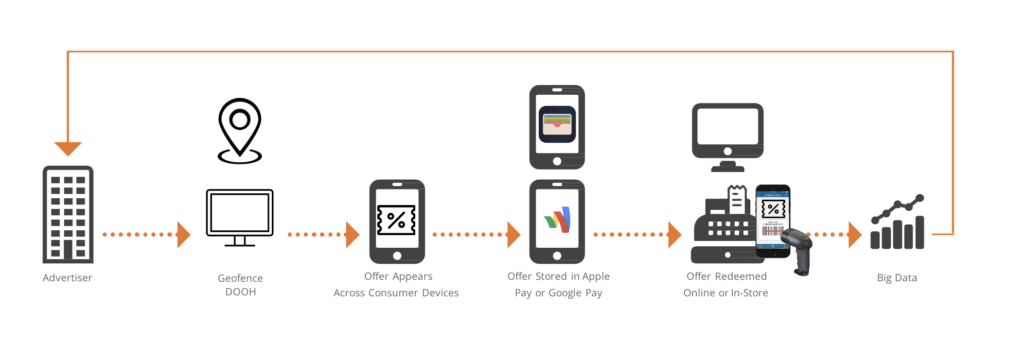
READ ALSO: Solidify your understanding of important DOOH metrics and learn how they can be used to measure different aspects of your DOOH campaign’s success
Key benefits of using QR codes in OOH advertising
QR codes are transforming outdoor advertising and changing the way brands engage with consumers. Here’s why they’re so effective in OOH campaigns:
Increased consumer engagement
QR codes turn passive OOH ads into interactive experiences, inviting people to engage directly with the brand. Whether it’s accessing exclusive content, redeeming offers, or RSVPing to events, QR codes turn a quick scan into a meaningful connection. For example, a retail brand could add a QR code to a bus shelter ad, offering a special discount when scanned — making it easy for people to shop right from their phones. This interaction turns static advertising into a dynamic, two-way experience that boosts brand recall and user engagement.
Data and performance measurement
Dynamic QR codes provide detailed insights into audience engagement. With access to privacy-compliant data on scan rates, timing, location, and more, you can measure how your OOH ads perform and adjust based on real-time results. This data-driven approach lets marketers and brands make informed decisions to maximize return on investment and refine future strategies.
Seamless online and offline integration
QR codes bridge the gap between physical ads and digital experiences. By linking a QR code on a billboard to a landing page or video, you can extend your reach beyond the OOH ad itself. This cross-channel approach boosts brand visibility and increases the impact of OOH campaigns, as people can take action instantly from an offline ad.
Real-world example of a successful QR code campaign in OOH advertising
Boehringer Ingelheim, a global pharmaceutical company, wanted to raise awareness and drive sales for its new pet antiparasitic product under the Frontpro brand, Frontpro Antiparasitic. To do this, the brand launched a programmatic DOOH campaign across key cities in Spain. Featuring a mix of static and digital creatives, the OOH ads also incorporated dynamic QR codes that encouraged audiences to interact with the content. The result? A staggering 254% boost in positive brand perception.
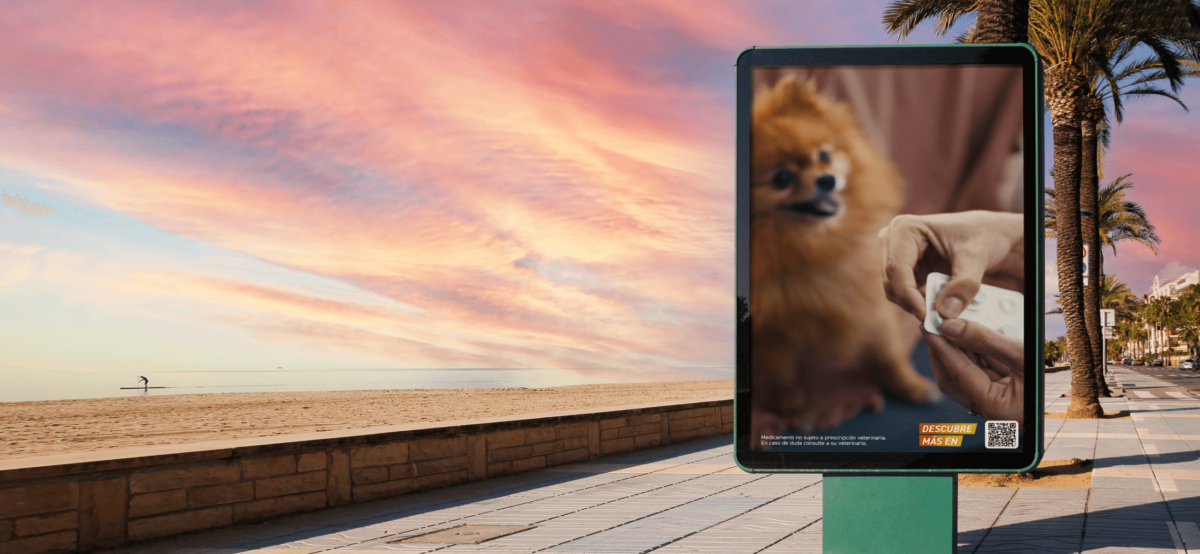
Launched with agency partner OMD Spain and OOH expert Broadsign, the ads targeted dog lovers in cities like Madrid, Barcelona, Valencia, and Sevilla. Shopping malls and outdoor screens were selected within a certain radius of pet stores stocking Frontpro Antiparasitic to drive in-store foot traffic. Meanwhile, Broadsign leveraged its OOH expertise to create detailed campaign proposals, enabling the brand and agency to segment by location and interests while applying consumer data for a more qualitative impact.
Read the full Boehringer Ingelheim case study to see the results and discover the benefits of incorporating dynamic QR codes into your pDOOH strategy.
Want to take your OOH campaigns further?
Dynamic QR codes are an incredible tool to boost engagement, track performance, and connect offline ads with digital content. For agencies and media buyers looking to bring more value to their OOH campaigns, QR codes offer a simple, effective, and flexible solution.
Ready to integrate QR codes into your next OOH campaign? Check out our eBook for actionable tips on integrating digital out-of-home into your omnichannel marketing strategy for high-impact, cross-channel campaigns.
